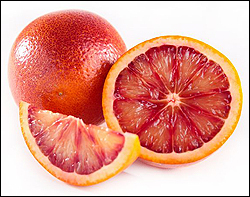
Although botanicals including rosemary, spearmint, tea tree, citronella, sandalwood and roman chamomile are quite aromatic, it takes a significant amount of plant material to produce even a small quantity of essential oil.
We should be mindful and refrain from utilizing essential oils in an excessive, careless or wasteful manner. We often emphasize the important less is more approach when it comes to essential oil safety and efficacy. However, the less is more approach can and should also be applied to the conscientious use of essential oils due to the significant amount of botanical material required to produce essential oils. Sustainability is a very real concern, especially given the growing demand for essential oils.
Essential Oil Yields
Aromatherapy educator Andrea Butje emphasizes the point by explaining that it takes all of the petals from 30-50 roses to produce a single drop of Rose Otto Essential Oil.
Distilling rose petals (Rosa damascena) results in a yield of only 0.02-0.03% Rose Otto Essential Oil, and potentially much less if the petals are not harvested and distilled at the most opportune time. [Betinna Malle and Helge Schmickl, The Essential Oil Maker’s Handbook . If I am doing my math correctly, that translates into a yield of only 1 kg of Rose Otto per 3,500-5,000 kg of rose petals.
For some botanicals, it’s optimal to first dry or partially dry the botanical prior to distillation. For others, it’s best to work with freshly harvested botanical material. Not all botanicals produce enough essential oil to make it cost effective to extract the botanical’s precious essential oil.
The cost to plant, grow, harvest, sort and dry (when needed) the botanical material combined with the costs to distill and resulting yield all impact the final pricing of the essential oil.
The Essential Oil Maker’s Handbook provides an enlightening overview of the optimal way to distill over 100 botanicals and includes the typical yield range for each.
Essential Oil Yields for 26 Essential Oils
| Common Oil Name / Botanial Name | Yields from essential oil |
Yields from |
| Basil Ocimum basilicum |
0.02-0.04% | |
| Bergamot Citrus bergamia |
0.3-0.6% | .4-.5% |
| Chamomile German Matricaria chamomilla |
0.05-0.1% | .2-.3% |
| Chamomile Roman Anthemis nobilis |
0.8-1.0% | .1-1% |
| Cinnamon Bark Cinnamomum zeylanicum |
0.5-0.8% | |
| Citronella Cymbopogen nardus |
0.4-3% | |
| Clary Sage Salvia sclarea |
0.1-1% | .6-1% |
| Eucalyptus globubus Eucalyptus globulus |
3-4% | 1.25-3.3% |
| Fir Douglas Abies alba |
0.7-1% | |
| Frankincense Boswellia Carterii |
0.40% | |
| Geranium Pelargonium graveolens |
0.1-1% | .1-.2% |
| Ginger Zingiber officnale |
1.9-2.6% | 3.3-5% |
| Lavender Bud Lavandula officinalis |
2.5-3% | |
| Marjoram Origanum majorana |
0.3-0.9% | .5-.6% |
| Myrrh Commiphora myrrha |
2-10% | |
| Neroil Citrus aurantium |
0.07-0.1% | |
| Patchouli Pogotemon cablin |
1.5-4% | 2-3.3% |
| Pepper Piper Nigrum |
1-2% | |
| Peppermint Mentha piperita |
0.1-1.5% | 1-1.4% |
| Petitgrain Citrus aurantium |
0.2-0.4% | |
| Rase Otto Rosa damascena |
0.02-0.03% | |
| Rosemary Rosmarinus officnalis |
1-2% | 1-2% |
| Rosewood Animba rosaeodora |
0.8-1.2% | |
| Sandalwood Santalum album |
3-5% | |
| Tea Tree Melaleuca alternifolia |
1-2% | 1.60% |
| Ylang Ylang Cananga odorata |
1.5-2.5% | 1.25-2.5% |